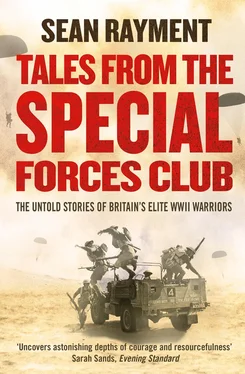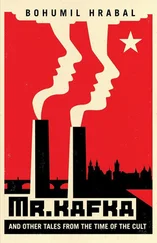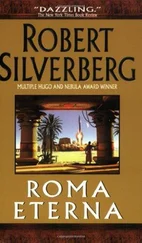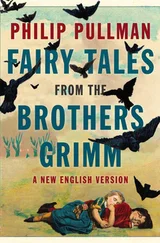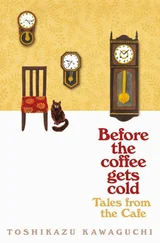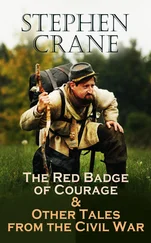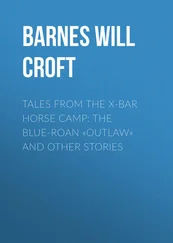1 ...8 9 10 12 13 14 ...19 ‘We knew precious little about the LRDG and we didn’t find out much more after the interview with Eitzen. But we knew it would be something different, and that would have to be better than our current situation. For the first time since being called up, I did feel a sense of excitement.’
* * *
Jimmy Patch was born in 1920 and attended the Aldersbrook Elementary School in Wanstead before winning a scholarship to the Wanstead County High School where he was educated until the age of 16. Although he possessed the intellectual ability to attend university, his father, who had served in the First World War and won the Military Cross, had other ideas. After being demobbed in 1919, Jimmy’s father was employed in the Ministry of Labour during the depression and, after seeing hundreds of men join the dole following the collapse of the economy, decided that his son would get a ‘nice steady job’.
‘I left school and joined the Post Office as a counter clerk. I worked there for three years, based in Loughton, Essex; then I passed a clerical exam and was transferred to London. It was a very comfortable existence; the hours were nine to four, and nine to twelve-thirty on Saturday.’
When war was declared in September 1939, Jimmy, like hundreds of thousands of young men of his generation, soon began to accept the inevitability of being called up to train, fight and possibly die in a war of national survival.
‘I was 19 at the outbreak of war. I didn’t volunteer to serve in the Army, I waited until I was called up, which happened in May 1940, at the time of Dunkirk. I was told that I would be going to the Royal Artillery and would be a signaller – there was no option. Basic training took place in Scarborough at the Royal Artillery Signals Training Regiment. Obviously the threat of invasion at the time was very real. With practically no training at all – we certainly hadn’t fired a rifle – we were marched up to Scarborough Castle dyke every evening and spent the night guarding England. We each had a rifle and 50 rounds of ammunition in a cardboard box. We were the only thing that stood between Britain and being invaded by Hitler.’
For Jimmy, life in the Army was everything he had feared. He found the discipline and the endless inspections tiresome beyond belief, although he did enjoy the signals training, which taught him how to use a Number 11 radio *and how to send messages by radio or light-flashes using Morse code.
‘I didn’t regard being called up as an adventure, I just looked upon it as something that was inevitably happening to me. I had to submit to the discipline of the Army, of course, which I found very tiresome. In fact at one stage in 1941 I volunteered to be transferred to the RAF, because volunteers were called for, but nothing happened.’
The training continued until the late spring of 1941, when both Jimmy and Bill learnt that they were to be sent to fight in the North African campaign. Both men were given embarkation leave, but Jimmy’s leave was extended by another week after his parents’ house was damaged during a German bombing raid. ‘It was pretty scary. The house was badly damaged, but no one was injured and I got an extra week’s leave before being sent up to Liverpool to board a troopship bound for the Middle East.’
The Mediterranean Sea was a war zone in 1941, and the only relatively safe way for ships to reach Cairo was to travel in convoys via the Cape of Good Hope and up the east coast of Africa. For Jimmy and hundreds of others aboard, it was a journey into the unknown from which many would never return.
‘We were packed cheek by jowl on the troopship. There were dozens of us in a huge dormitory, each with a hammock. It was impossible to sleep. The atmosphere was hot, fetid and noisy. Every night a group of us would collect our blankets and try and find a sheltered spot on the deck and sleep there, and we did it in all weathers.
‘We all soon settled into a routine. There was a bit of training and PT to do, but we also played a lot of housey-housey – now called bingo. The voyage seemed to take an age but it ended up being quite enjoyable. We steamed almost to the other side of the Atlantic before heading back to the West African coast and pulling into Sierra Leone to refuel. Then we travelled down to Durban, where we transferred to another ship, the New Mauritania . In a convoy of three ships we moved up the east coast of Africa, into the Red Sea and on into the Suez Canal and Port Tufic.’
The LRDG was the creation of Major Ralph Bagnold of the Royal Signals, a man regarded by many within the new world of special forces as a genius. In the late 1920s and 30s, Bagnold, together with a collection of friends such as Bill Kennedy Shaw, Guy Prendergast and Rupert Harding-Newman, spent a great deal of time exploring the region of desert between the Mediterranean and Sudan. During those years Bagnold designed and perfected expeditionary equipment which would later be used by the LRDG. He created a simple sun compass to make navigation easier, perfected the condenser to conserve water in car radiators, thought up the idea of sand mats to help extricate vehicles stuck in soft sand, and developed properly balanced rations when travelling in such austere conditions.
Bagnold originally came up with the idea for the LRDG in November 1939, but it wasn’t until Italy entered the war, in June 1940, that his proposals were taken seriously and approved by the Middle East commander-in-chief, General Sir Archibald Wavell. Following a meeting between the two men, Wavell asked Bagnold if he could create an operational unit within six weeks.
Bagnold’s aim was to build a force capable of mechanised reconnaissance, intelligence gathering, navigation and mapping vast areas of the North African desert.
It was a massive undertaking but Bagnold set about achieving his mission with his customary zeal and over the next six weeks he recruited a force of New Zealanders who were regarded as both self-reliant and full of initiative and therefore perfect for working in enemy territory in small groups for weeks on end. While Bagnold began to select the men for his force, Harding-Newman, who had also been recruited into the unit, was given the responsibility of acquiring transportation.
The British Army in the Middle East in 1940 had no vehicles remotely suitable for desert warfare, and so Bagnold approached the Chevrolet company in Alexandria and acquired 14 vehicles, while Harding-Newman managed to obtain a further 19 from the Egyptian Army. The vehicles were quickly modified for the desert and long-range patrolling and repainted in camouflage colours.
The vehicles were fitted with a variety of weapons. These included the old Lewis machine-guns, which were initially fitted to 11 of the trucks and later replaced by the twin Vickers machine-gun, as well as four Boys anti-tank rifles and one 37mm Bofors anti-aircraft gun.
During those six weeks the men also had to be trained in desert navigation. This required detailed knowledge of how to calculate one’s location with sun compasses and theodolites, which use the position of the sun and the stars respectively.
Once all the men and equipment had been gathered, Bagnold took his force on two exercises into the desert to test their newly acquired skills and tactics. It was a tough ask, and many mistakes were made during that hectic period. Days were long and sleep was always welcomed. For some the demands of desert life proved too much, and they either asked to be returned to their units or were told their services were no longer required. Bagnold wanted to test his unit on every eventuality they might find in the desert, but their future success would depend above all on their ability to navigate and survive in one of the most hostile terrains on earth. Despite the huge challenges, however, by August 1940 the LRDG was operational.
Читать дальше
